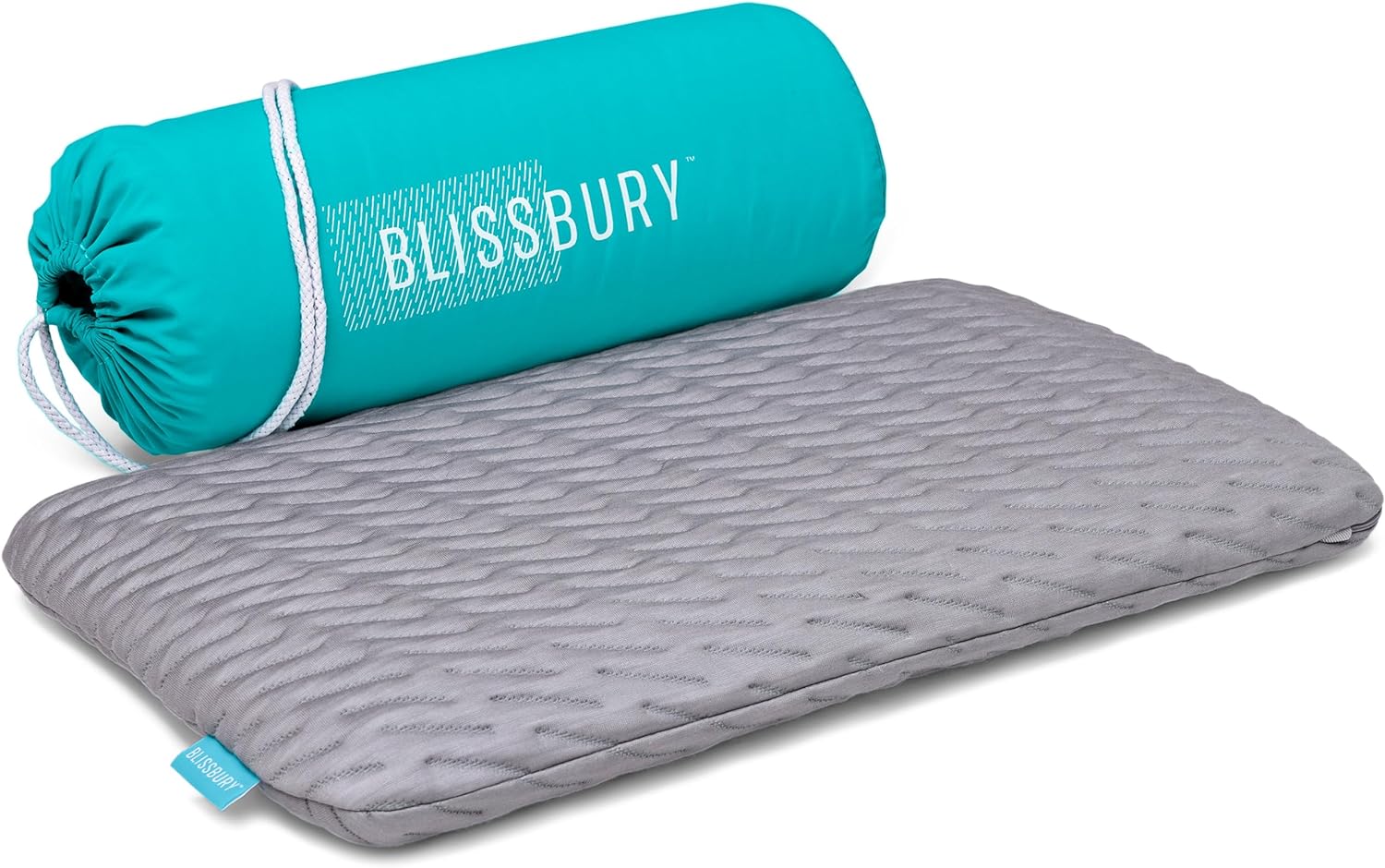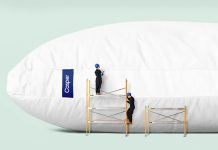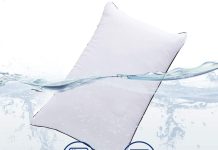We all love our cozy pillows, don’t we? They provide us with comfort and support as we catch up on our beauty sleep. But have you ever wondered how to properly clean and care for your pillows? In this article, we will guide you through the step-by-step process of washing cotton, polyester, and down pillows, ensuring that they stay fresh, fluffy, and oh-so-perfect for a good night’s rest. So say goodbye to stains, odors, and allergens, and get ready to give your beloved pillows the spa treatment they deserve!
Review contents
Washing Cotton Pillows
Preparing the Pillow
Before washing your cotton pillows, it is important to properly prepare them. Start by removing any pillowcases or covers and check the care label for specific washing instructions. This will ensure that you are using the correct method and temperature to wash your pillows.
Choosing the Right Washing Method
There are two main methods for washing cotton pillows – hand washing and machine washing. The method you choose will depend on your personal preference and the care instructions on the label.
Hand Washing
To hand wash your cotton pillows, fill a sink or basin with lukewarm water and add a mild detergent. Gently agitate the pillows in the water, ensuring they are fully submerged. Pay extra attention to any stained areas and gently scrub them with a soft brush or cloth. Rinse the pillows thoroughly with clean water until all the detergent has been removed.
Machine Washing
If the care label allows, machine washing can be a convenient and effective method for cleaning cotton pillows. Place the pillows in the washing machine, making sure not to overload it. Add a mild detergent and set the machine to a gentle cycle with a cold or warm water temperature. Avoid using hot water as it can shrink or damage the pillows. Once the cycle is complete, remove the pillows and proceed to the drying process.
Drying the Pillow
Properly drying the pillows is crucial to prevent mold and mildew growth. Place the pillows in a well-ventilated area or use a dryer with a no-heat or low-heat setting. Adding a few clean tennis balls or dryer balls can also help fluff the pillows and prevent clumping. Ensure that the pillows are completely dry before using or storing them.
Additional Tips
- Regularly fluffing your cotton pillows can help maintain their shape and loftiness.
- Using pillow protectors can help extend the lifespan of your pillows and make the cleaning process easier.
- Avoid overloading the washing machine to ensure a thorough cleaning.
Washing Polyester Pillows
Checking the Care Label
Before washing your polyester pillows, always check the care label for specific instructions. Some polyester pillows may be machine washable, while others may require spot cleaning or dry cleaning. Following the care instructions will help prevent any damage to the pillows.
Pre-Treating Stains
If your polyester pillows have any stains, it is important to treat them before washing. Create a homemade stain remover by mixing equal parts water and mild detergent. Gently apply the solution to the stained areas using a clean cloth or sponge. Let it sit for a few minutes before proceeding to the washing step.
Machine Washing
If the care label allows, machine washing is usually the easiest and most effective method for cleaning polyester pillows. Place the pillows in the washing machine and add a mild detergent. Use a gentle cycle with warm water. Avoid using hot water, as it can cause the polyester fibers to shrink or become damaged. Once the cycle is complete, remove the pillows and move on to the drying process.
Drying the Pillow
To dry polyester pillows, you can use a dryer or air drying. If using a dryer, set it on a low heat or no-heat setting to prevent shrinkage or damage. Adding a few clean tennis balls or dryer balls can help fluff the pillows during the drying process. If air drying, place the pillows in a well-ventilated area and rotate them occasionally to ensure even drying.
Fluffing and Reshaping
After the pillows are completely dry, take a moment to fluff and reshape them. Gently knead and massage the pillows to redistribute the polyester fill and regain their original shape. This step will ensure that your pillows remain comfortable and supportive.
Washing Down Pillows
Checking the Care Label
Down pillows require special care, so it is important to carefully check the care label for specific instructions. While some down pillows can be machine washed, others may require dry cleaning. Following the care instructions is crucial to protect the quality and longevity of your down pillows.
Pre-Treating Stains
Before washing your down pillows, pre-treat any stains using a gentle stain remover or a mixture of mild detergent and water. Apply the solution to the stained areas and gently blot with a clean cloth or sponge. Allow the solution to sit for a few minutes to break down the stain before proceeding to the washing step.
Machine Washing
If your down pillows are machine washable according to the care label, you can clean them effectively using a gentle cycle with warm water. Add a mild detergent specifically designed for down or delicate fabrics. It is recommended to wash two pillows at a time to balance the load. Once the washing cycle is complete, proceed to the drying process immediately.
Adding Tennis Balls
When drying down pillows, adding clean tennis balls to the dryer can help fluff the pillows and prevent clumping. The tennis balls help to break up any clumps of feathers and ensure that the down fills the pillows evenly. Set the dryer to a low heat or no-heat setting to protect the delicate down feathers.
Drying the Pillow
Properly drying down pillows is essential to prevent mold or mildew growth. It is recommended to use a dryer to ensure a thorough and even drying process. Alternatively, you can air dry the pillows in a well-ventilated area, but this may take longer. Make sure the pillows are completely dry before using or storing them.
Fluffing and Reshaping
Once your down pillows are fully dry, take the time to fluff and reshape them. Gently knead and massage the pillows to redistribute the down feathers and restore their original loftiness. This step will help maintain the pillows’ plushness and ensure that you continue to enjoy a comfortable sleep.
Common Cleaning Precautions
Reading the Care Labels
Before attempting to wash any pillows, it is crucial to read and follow the care labels. The care labels provide specific instructions on the appropriate cleaning methods and precautions for each type of pillow. By reading the care labels, you can avoid damaging or shrinking the pillows during the washing process.
Checking for Tears or Damage
Before washing your pillows, it is important to inspect them for any tears, loose seams, or other damage. Washing a damaged pillow can exacerbate the issue and potentially cause further damage. If you notice any tears or damage, it may be best to repair or replace the pillow rather than continue with the washing process.
Removing Covers or Pillowcases
If your pillows have removable covers or pillowcases, it is advisable to remove them before washing. This will allow for a more thorough cleaning of the actual pillow. Follow the care instructions for the covers or pillowcases separately to ensure proper cleaning.
Identifying Stains
Before washing, take the time to identify any stains on the pillows. Different types of stains may require different cleaning methods or stain removers. Pre-treating stains before washing can help improve the chances of removing them completely.
Choosing the Right Cleaning Products
When washing pillows, choose cleaning products that are safe for the specific material and fill of the pillow. Mild detergents are generally a good option, but check the care label for any recommendations or restrictions. Using the wrong cleaning products can cause damage or affect the quality of your pillows.
Removing Stains
Creating a Homemade Stain Remover
If your pillows have stains that need to be treated before washing, you can create a homemade stain remover. Mix equal parts water and mild detergent in a bowl or spray bottle. Gently apply the solution to the stained areas using a clean cloth or sponge. Allow the solution to sit for a few minutes to break down the stain before proceeding with the washing process.
Spot Cleaning
For smaller stains or localized spots, spot cleaning can be an effective method. Use a clean cloth or sponge and gently dab the stained area with a mixture of mild detergent and water. Avoid rubbing the stain, as this may cause it to spread or set deeper into the fabric. After spot cleaning, allow the area to dry before proceeding with washing.
Soaking the Stained Area
For stubborn or larger stains, soaking the affected area can help to loosen and remove the stain. Fill a basin or sink with lukewarm water and add a small amount of mild detergent. Place the stained part of the pillow into the solution and gently agitate it. Allow the pillow to soak for several hours or overnight before proceeding with the washing process. Rinse the pillow well to remove any soap residue before drying.
Washing Pillow Covers
Removing Pillow Covers
Pillow covers are typically removable and can be washed separately from the pillows themselves. Before washing, unzip or unbutton the covers and remove them from the pillows. This will allow for a more thorough cleaning and prevent any damage or shrinkage of the covers.
Pretreating Stains on Covers
If your pillow covers have stains, it is important to treat them before washing. Follow the same pre-treatment steps mentioned earlier for removing stains. This may involve using a homemade stain remover or spot cleaning solution, depending on the type of stain.
Machine Washing Covers
Most pillow covers can be safely machine washed. Check the care label for specific instructions regarding temperature and detergent use. Using a gentle cycle with a mild detergent is generally recommended. If the covers are delicate or have intricate details, consider placing them in a laundry bag or pillowcase to provide extra protection during the wash cycle.
Drying Covers
After machine washing, remove the covers from the machine and shake them out gently to remove any excess water. Depending on the care instructions, you can either air dry the covers or place them in a dryer on a low heat or no-heat setting. Avoid high heat, as it can cause shrinkage or damage to the fabric. Once the covers are fully dry, you can reassemble them with the pillows.
Frequency of Washing
Determining Washing Frequency
The frequency at which you should wash your pillows depends on several factors, such as personal preference and lifestyle. As a general guideline, it is recommended to wash pillows every 6 to 12 months to maintain cleanliness and freshness. However, some individuals may choose to wash their pillows more frequently if they are prone to allergies or have specific hygiene concerns.
Regular Washing
Regularly washing your pillows can help remove any accumulated dirt, body oils, and dust mites. This will not only ensure a clean sleeping environment but also help prolong the lifespan of your pillows. Following the care instructions and using the appropriate washing method for your specific pillows will help maintain their quality and comfort.
Smelly or Stained Pillows
If your pillows have developed an odor or become stained, it is recommended to wash them immediately rather than waiting for the regular washing schedule. Treating stains promptly and airing out pillows regularly can also help prevent unpleasant smells. By addressing these issues as soon as they arise, you can ensure that your pillows remain fresh and comfortable.
Additional Tips and Tricks
Using Pillow Protectors
Using pillow protectors is an excellent way to safeguard your pillows from dirt, stains, and allergens. These protective covers act as a barrier between your pillows and pillowcases, preventing the accumulation of dust mites and extending the lifespan of your pillows. Pillow protectors are usually machine washable, making them easy to clean and maintain.
Sun-Drying for Freshness
After washing your pillows, consider sun-drying them to add an extra touch of freshness. Sunlight is a natural disinfectant and can help eliminate any lingering odors. Place the pillows in a well-ventilated area outside and turn them occasionally to ensure even drying. However, be cautious of direct sunlight, as excessive exposure can cause discoloration or damage to the pillows.
Regularly Fluffing Pillows
To maintain the loftiness and shape of your pillows, it is essential to regularly fluff them. This can be done by gently kneading and massaging the pillows to redistribute the filling. Fluffing the pillows helps prevent clumping and maintain their supportiveness. It is recommended to fluff your pillows every few days or whenever you notice them losing their shape.
Avoiding Overloading the Washing Machine
When washing your pillows, it is crucial to avoid overloading the washing machine. Overloading can result in inadequate cleaning and prevent proper agitation of the pillows. If the pillows are crammed in the machine, they may not be able to move and rinse thoroughly. It is best to follow the care instructions and wash only a couple of pillows at a time to ensure effective cleaning.
Conclusion
Maintaining clean and fresh pillows is vital for a restful night’s sleep. By following the proper washing methods for cotton, polyester, and down pillows, you can ensure that your pillows remain free from dirt, stains, and allergens. Regularly checking the care labels, treating stains, and choosing the right cleaning products will help preserve the quality and longevity of your pillows. Additionally, adopting good cleaning precautions, such as removing covers, identifying stains, and checking for damage, will contribute to the overall cleanliness and quality of your pillows. Remember to regularly fluff and reshape your pillows, use pillow protectors, and follow the recommended frequency for washing to enjoy comfortable and restful nights.



























